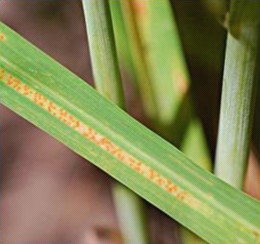Not even the best teacher can reach students effectively without good course materials, a limitation in many parts of the developing world. At universities in resource-poor countries where training of agriculturists and scientists is key, libraries may not be well stocked, and software needed to analyze data and develop predictive models may be unavailable or quite expensive.
Online training modules developed by SANREM CRSP Researcher Karen Garrett with colleagues and students at Kansas State University are addressing this need in the area of plant disease and epidemiology. The modules are available free to anyone with internet access. Published in December and January in the journal The Plant Health Instructor, they are designed to teach principles of modeling: for instance, predicting the course of epidemics such as cassava mosaic disease. CMD is the most important viral disease of cassava in sub-Saharan Africa, in some years causing severe food shortages and economic losses. Such models could help policymakers determine how climate change is likely to affect a particular disease and what alternative agricultural policies might mitigate the damage.
“We are tracking use of the teaching modules,” Garrett says. “So far, they have been accessed by more than 5,000 visitors in 99 countries.” The modules use R, a free software environment that includes base packages for graphics and statistics. R is especially useful in the sciences and engineering, Garrett says. “Our modules give a basic introduction to R by showing how to use it in different situations.”
Garrett, who teaches plant epidemiology, was preparing for a fall 2006 course when she thought of publishing the modules online. “If you’re developing material anyway, why not go ahead and publish it?” she says. “It’s value added.” Garrett and her colleagues continued updating the modules in 2007. “We went through quite a few revisions to make them easier to understand.”
Garrett created the modules mainly for teaching and for training researchers. “When we go back in the classroom this fall, we will develop more modules,” she says. “One will teach basic statistics for the most common types of field work, that is, experiments comparing different plant varieties and disease management strategies.”
Because the modules are free, they are especially valuable for teaching remotely, says Garrett, a research partner for LTRA-4: Adapting to Change in the Andean Highlands: Practices and Strategies to Address Climate and Market Risks in Vulnerable Agro-ecosystems. She foresees a global shift in how people seek knowledge: “Universities are becoming more than a place where you go to learn. They are also a source from which to obtain information globally.”
“We’ve already heard from other teachers that they are thinking about using the modules,” Garrett says. Her hope is that future scientists will carry the concepts from the classroom to the cassava fields and beyond, working with farmers to develop better strategies.



